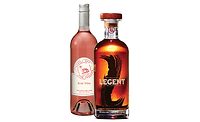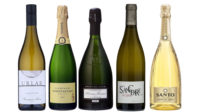2024 State of the Beverage Industry: Premiumization key for wine, spirits
Ready-to-drink cocktails, super-premium wine outperform overall categories

Image courtesy of Spirit of Gallo
During the past couple years, where the wine industry witnessed setbacks due to the COVID-19 pandemic, experts note that the U.S. wine drinking population is making a comeback thanks to the revival of on-premise.
In its “Key trends driving the US wine market in 2023” report, London-based IWSR notes that, since the pandemic, overall wine participation rates in the United States have bounced back with the number of regular wine drinkers growing by 14 million between 2021 and 2022.
“This momentum is mainly coming from those under the age of 40, and the wine industry is seeing a growing influence not just of the most engaged consumers (aged 25-54), but also of [legal drinking age] (LDA) Gen Z to an extent,” it states.
However, despite this boost to the U.S. drinking population, overall wine consumption volumes in the United States dipped 2% in 2022, and IWSR forecasts that the trend of gentle decline will continue.
According to Circana data, the table wine category was just shy of $12 billion in sales in U.S. multi-outlets and convenience stores for the 52 weeks ending May 19. This, however, was a 1% decline from the previous year. Case sales fared worse as they were down 4.1%.
Top Table Wines (Brand family)
Source: Circana, Chicago. Total U.S. supermarkets, drug stores, gas and convenience stores, mass merchandisers, military commissaries, and select club and dollar retail chains for the 52 weeks ending May 19.
Mike Wyatt, client insights consultant for Chicago-based Circana, noted in Beverage Industry’s February 2024 issue that the U.S. wine market struggled in 2023.
“The average price for wine increased 3.9% this past year, which is slightly above the U.S. inflation rate over the same time period,” Wyatt said. “This price increase coupled with overall consumer shifts to RTDs [ready-to-drink] and spirits created continued challenges for wine producers and sellers.”
Yet, where more engaged wine drinkers are driving premiumization, Wyatt pointed to this trend as helping spur growth within the category
“Collectively, the super-premium and ultra-premium segments performed the best across table and sparkling wine,” he explained in Beverage Industry’s February 2024 issue. “This growth can be attributed to an ongoing shift to premiumization within the wine category as loyal consumers are willing to pay a premium for perceived quality and go-to brands.
“Essentially, the $13-$19.99 range proved to be the sweet spot with regard to growth and consumption,” Wyatt continued.
Among the top table wines, super-premium brand Josh Cellars saw its sales up 14.1%, totaling $499 million, with case sales up 13.4%, according to Circana data through May 19. The only other brand in the Top 10 to record double-digit dollar sales was premium boxed wine brand Black Box, which saw sales increase 10.4%, totaling $329 million, while case sales were up 7.4%.
Where the total wine category witnessed slight declines in 2023, experts note that the sparkling wine segment remains a bright spot in terms of growth.
Top Sparkling Wine/Champagne (Brand family)
Source: Circana, Chicago. Total U.S. supermarkets, drug stores, gas and convenience stores, mass merchandisers, military commissaries, and select club and dollar retail chains for the 52 weeks ending May 19.
According to Circana data, sparkling wine reached $1.8 billion in sales, with a slight increase of 0.3% for the 52 weeks ending May 19. Case sales were down 2.7% during that time.
Although both sparkling wine and still wine experienced similar challenges in the past year, Circana’s Wyatt pointed to performance within the sparkling wine/Champagne segment as noteworthy.
“The notable exception is the super-premium tier ($13-$17.99), which grew 7.1% offsetting some of the declines in other tiers and was driven primarily by Prosecco from top producers,” he explained in Beverage Industry’s February 2024 issue.

For the 52 weeks ending May 19, super-premium sparkling wine brand La Marca leads the segment with sales of $328 million, a 10.4% increase, according to Circana data. Case sales also were up 6.6%.
IWSR notes that, although volumes for still wine — and the total wine category — witnessed declines, sparkling wine recorded its 21st consecutive year of both value and volume growth in 2022.
“The more premium segments ($40 plus for Champagne, $10 plus for other sparklers) are forecast to see the strongest growth over the next five years,” it states.
As far as consumers experimenting with different wine varietals, Circana’s Wyatt pointed to white, lighter-bodied reds, sparkling and sweeter wines as having seen the highest levels of trial and experimentation.
“Sweeter wines encompass many flavor profiles not indicative of traditional varietals and are considered more approachable, especially for non-core wine consumers or those looking for a light beer or RTD alternative,” Wyatt explained in Beverage Industry’s February 2024 issue. “However, Sauvignon Blanc, Beaujolais and Prosecco experienced notable trial and growth among white, lighter-bodied reds and sparkling respectively.
Top Spirits (Brand family)
Source: Circana, Chicago. Total U.S. supermarkets, drug stores, gas and convenience stores, mass merchandisers, military commissaries, and select club and dollar retail chains for the 52 weeks ending May 19.
The spirits category, however, fared better than its alcohol counterpart. For the 52 weeks ending May 19, total spirits sales reached $11.8 billion a 5.5% increase, according to Circana data. Case sales also were up 6.9%.
In Beverage Industry’s April 2024 issue, Michael Wyatt, client insights consultant for Chicago-based Circana, noted that the U.S. spirits market grew 6.1% in the past year — outpacing beer and wine over the same time period.
“Conversely, rum, gin, brandy and cognac have been the most challenged over the past year,” Wyatt said. “RTDs and tequila have shown the biggest improvement compared with previous years while cordials also experienced a moderate resurgence this past holiday season.”
Brian Sudano, CEO of S&D Insights LLC, Norwalk, Conn., described the spirits market as “flat” with gains from ready-to-drinks (RTDs) and tequila offsetting the declines of the rest of the market.
“Tequila continues to lead growth followed by bourbon and of course RTDs,” he said in Beverage Industry’s April 2024 issue. “Generally speaking, all segments of the spirit industry slowed versus trends in 2022.”
Current data continues to exemplify these trends. According to Circana data, tequila dollar sales were up 6.8%, totaling $1.2 billion, for the 52 weeks ending May 19. Case sales for the time were up 3.6%.
Within the Top 5 tequila brands, Don Julio showed the most growth, with the brand’s sales increasing 13.1%, totaling $137.6 million. Case sales also increased 14% during that time.
In terms of RTD spirits, Circana data for the 52 weeks ending May 19 show premixed cocktails sales up 24%, totaling $1.4 billion, with case sales up 22.6%. Albeit from a smaller base, spirits seltzer centric saw sales up 47.7%, totaling $659.5 million, with case sales up 44.9%.
Circana’s Wyatt suggested in Beverage Industry’s April 2024 issue that consumers’ quest for healthier spirit options has spurred success for spirits-based RTDs.
“Consumers are looking for simpler ingredients and arguably healthier options within spirits, which has propelled the success of spirits-based RTDs, especially those touting natural ingredients such as real fruit juice,” he explained. “Additionally, despite some lingering economic pressures, consumers are willing to pay more for what they perceive as higher quality or upscale products.
“This is evidenced by premium and luxury whiskey and tequila over-indexing value products within the same segments, and further supporting the overall premiumization trend,” Wyatt continued.
S&D Insights’ Sudano echoed similar sentiments, also noting how whiskey and tequila are benefiting from premiumization trends.
“Whiskey, especially bourbon, and tequila continue to benefit from premiumization,” he said in Beverage Industry’s April 2024 issue. “It also fits in with RTDs that are part of the broader alternative adult beverage market, which includes both wine and beer based RTDs, but at a higher price point with the perception of being of higher quality by a large part of the RTD market consumers.”
Looking for a reprint of this article?
From high-res PDFs to custom plaques, order your copy today!






